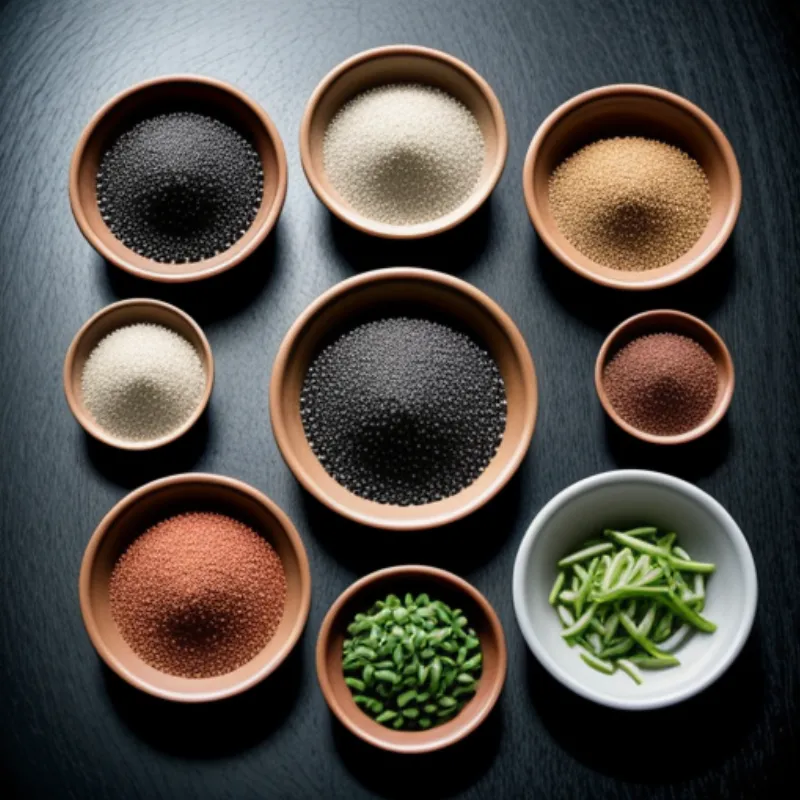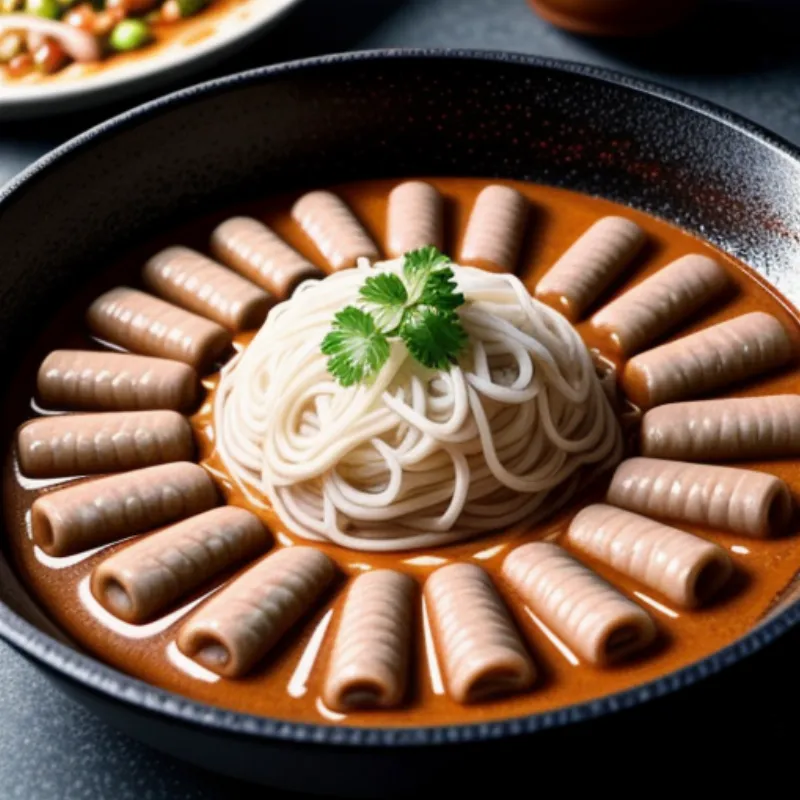Mala sauce, the fiery soul of Sichuan cuisine, is a captivating blend of tingling spices and rich, savory flavors. Imagine biting into a dish where the heat builds slowly, releasing an explosion of chili and Sichuan peppercorn that numbs your tongue while igniting your taste buds. That’s the magic of mala sauce.
This incredibly versatile sauce, often used in hotpots and stir-fries, can transform even the simplest ingredients into a culinary adventure. And the best part? You can easily recreate this flavor bomb in your own kitchen.
In this comprehensive guide, we’ll unlock the secrets to making authentic mala sauce at home. So, grab your aprons and let’s embark on a fiery culinary journey together!
What is Mala Sauce and Why Should You Make It?
“Mala” translates to “numbing and spicy,” perfectly capturing the essence of this unique sauce. The Sichuan peppercorns, with their distinctive floral aroma and tongue-numbing effect, are essential in creating this complex flavor profile.
Why you should try making your own mala sauce:
- Authentic flavors: Control the heat and adjust the ingredients to your liking, crafting a sauce that perfectly suits your palate.
- Fresher than store-bought: Using fresh ingredients guarantees a more vibrant and aromatic sauce compared to pre-made versions.
- Cost-effective: Making your own mala sauce is a budget-friendly way to enjoy this delicious condiment.
Mala Sauce Ingredients: Building the Foundation of Flavor
The key to a delicious mala sauce lies in the careful balance of its ingredients. Here’s what you’ll need:
Essential Aromatics:
- Dried chilies: The backbone of mala sauce, providing the heat. Choose from a variety of chilies like Tien Tsin, Arbol, or Sichuan chilies for different levels of spiciness.
- Sichuan peppercorns: These magical berries bring the signature numbing sensation. Toast them lightly before grinding for enhanced flavor.
- Vegetable oil: A neutral oil like canola or grapeseed oil provides a base for the spices to infuse their flavors.
Aromatic Enhancers:
- Ginger: Adds a warm and pungent note.
- Garlic: Provides a savory base and enhances the overall complexity.
- Scallions: Impart a fresh, oniony flavor.
Flavor Boosters:
- Doubanjiang: A fermented bean paste that adds depth and umami.
- Fermented black beans: Contribute a salty and slightly sweet flavor.
- Soy sauce: Enhances the savory notes of the sauce.
- Sugar: Balances out the heat and adds a touch of sweetness.
 Mala Sauce Ingredients
Mala Sauce Ingredients
Essential Tools for Mala Sauce Success:
- Spice grinder or mortar and pestle: Essential for grinding the dried chilies and Sichuan peppercorns.
- Heavy-bottomed pot or wok: Ensures even heat distribution for frying the spices.
- Fine-mesh strainer: For a smoother sauce, strain out any large spice particles.
- Airtight container: To store your homemade mala sauce.
How To Make Mala Sauce: A Step-by-Step Guide
Ready to embark on your mala sauce adventure? Follow these simple steps:
- Prepare the chilies: Remove the stems and seeds from the dried chilies. If you prefer a milder sauce, remove the seeds entirely.
- Toast the spices: In a dry pan over medium heat, lightly toast the Sichuan peppercorns and dried chilies until fragrant. This step enhances their flavor.
- Grind the spices: Allow the toasted spices to cool slightly, then grind them into a coarse powder using a spice grinder or mortar and pestle.
- Sauté the aromatics: Heat the vegetable oil in a heavy-bottomed pot or wok over medium heat. Add the minced ginger, garlic, and chopped scallions. Sauté until fragrant, about 1-2 minutes.
- Bloom the spices: Add the ground chili and Sichuan peppercorn mixture to the pot. Stir constantly for about 30 seconds to release their aroma and prevent burning.
- Incorporate the flavor boosters: Add the doubanjiang, fermented black beans, soy sauce, and sugar to the pot. Stir well to combine all the ingredients.
- Simmer and infuse: Reduce the heat to low and simmer the sauce for 5-10 minutes, allowing the flavors to meld and deepen.
- Strain (optional): For a smoother sauce, strain the mixture through a fine-mesh strainer, discarding the solids.
- Adjust and serve: Taste the mala sauce and adjust the seasoning if needed. Add more chili flakes for extra heat, sugar for sweetness, or salt to taste.
 Making Mala Sauce
Making Mala Sauce
Tips and Tricks for Mala Sauce Perfection:
- Adjust the heat: Control the spiciness by adjusting the type and amount of chilies used. Start with a smaller amount and gradually add more to reach your desired heat level.
- Toasting is key: Toasting the Sichuan peppercorns and dried chilies is crucial for unlocking their full flavor potential.
- Don’t be afraid to experiment: Feel free to customize your mala sauce by adding other spices like star anise, cloves, or cinnamon.
- Storage: Store your homemade mala sauce in an airtight container in the refrigerator for up to 2 weeks.
FAQ: Answering Your Mala Sauce Queries
Q: Can I use pre-ground Sichuan peppercorns and chilies?
A: While it’s convenient, using pre-ground spices won’t yield the same depth of flavor. Grinding them fresh makes a significant difference.
Q: What can I substitute for doubanjiang?
A: If you can’t find doubanjiang, you can use a mixture of miso paste and chili bean paste for a similar savory and umami flavor.
Q: My mala sauce is too oily. What should I do?
A: You can skim off excess oil from the surface of the sauce after it has cooled slightly.
Delicious Ways to Enjoy Your Homemade Mala Sauce:
Now that you’ve mastered the art of making mala sauce, it’s time to put it to good use! Here are some tantalizing ideas:
- Mala hotpot: The classic way to enjoy mala sauce is in a simmering hot pot. Prepare a variety of meats, vegetables, and noodles to cook in the flavorful broth.
- Mala stir-fries: Add a spoonful or two of mala sauce to your stir-fries for a fiery kick. It pairs well with vegetables, tofu, and meats like chicken or beef.
- Mala noodles: Toss your favorite noodles with mala sauce for a quick and satisfying meal. Top with chopped scallions, sesame seeds, and a drizzle of chili oil for extra flavor.
 Dishes Made with Mala Sauce
Dishes Made with Mala Sauce
Conclusion: Embrace the Bold Flavors of Mala Sauce
Making your own mala sauce is a rewarding culinary adventure that allows you to experience the true essence of Sichuan cuisine. With this comprehensive guide and a dash of culinary curiosity, you’ll be creating restaurant-quality mala sauce in your own kitchen in no time!
So, gather your ingredients, unleash your inner chef, and get ready to tantalize your taste buds with the fiery and flavorful magic of mala sauce. Don’t forget to share your culinary creations and experiences in the comments below! And for more exciting sauce recipes and culinary adventures, explore the world of flavors on Family Cuisine. You might also enjoy these other sauce recipes we have: How to Make Kang Kong Belacan Sauce, How to Make Roti Canai Curry Sauce and How to Make Asam Pedas Sauce. Happy cooking!
